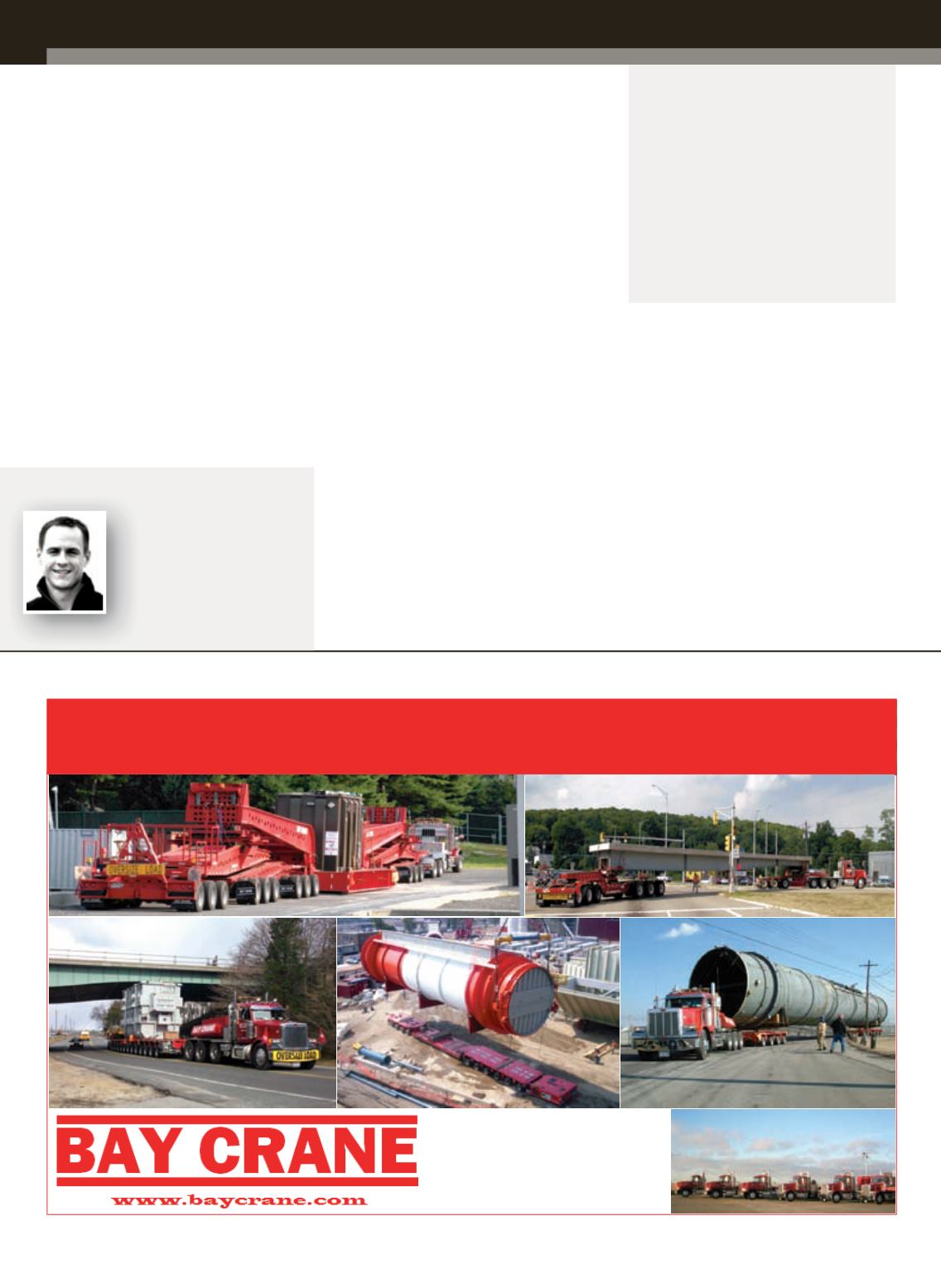
26
ACT
OCTOBER 2013
RIGGING REVIEW
tolerances to one another. When a wire
rope bends, each of its many wires slides
and adjusts in the bend to accommodate
the difference in length between the inside
and the outside bend. The sharper bend,
the greater movement, and the greater
capacity for stress on the wire rope.
While manufacturers of wire rope
are many and varied, each of the wire
ropes they produce have three basic
components:
■
THE WIRES
, which form the strands and
collectively provide the rope strength;
■
THE STRANDS
, which are helically
around the core; and,
■
THE CORE
, which forms a foundation for
the strands.
According to Python’s site, the greatest
differences in wire ropes are found in the
number of strands, the construction of
strands, the size of the core and the lay
direction of the strand versus the core. But
what does that mean for the layperson?
What should he or she look for when
purchasing wire rope?
Tony Fastuca, vice president Python
America & High Performance Products,
says that most people buy rope based on
four ideal standards. “Abrasion resistance,
fatigue resistance, flexibility and strength.
Those four typical standards often weigh
into a purchase decision,” he says. “A buyer
sometimes has to give a little in one area
to get a bit more in another, but a lot of
buyers are looking for a good balance of
those four standards.”
Lifespan varies
Whereas other products usually come
with an expected lifespan, wire ropes don’t
really have an average operational life.
“There are records that exist of wire
ropes getting two to three years of use,
sometimes longer,” says Fastuca. “But it’s
about the level of wear on the rope, not the
length of time it’s been in service.”
Just as the crane itself needs to undergo
frequent and period inspections, the
wire rope does, too. Fastuca talks of the
so called “A,B,Cs” of wire rope abuse –
abrasion, bending, crushing.
The principle goal of a wire rope
inspection is to find potential problems
before they manifest into incidents or
serious accidents. Inspections should
be performed slowly and methodically,
with a keen eye for corrosion or broken
wires or sections of rope that look
questionable. Because the reality of wire
rope is that it will fail if it becomes worn
out, overloaded, damaged, misused or
improperly maintained. It can lead to huge
headaches for companies that try to take
shortcuts or don’t properly maintain it – a
risk that just isn’t worth taking.
■
Things to look for when
inspecting wire rope:
■
Surface wear and tear
■
Broken wires
■
A reduction in diameter
■
Elongation in wire rope
■
Integrity of fittings
■
Evidence of neglect
■
Heat damage
■
Corrosion
THE AUTHOR
Tim Hillegonds
spent 10 years
in the heavy construction
insurance industry before
founding Thrive Creative
Services, a creative
copywriting agency dedicated
to helping businesses tell their stories.
New York; NY 718-392-0800
North Haven; CT 203 785 8000
Cumberland; RI 401-334-0006
Quincy; MA 617-990-6037
Transportation & Rigging Solutions for all your heavy haul needs
Bay Crane offering the northeast’s largest and most modern fleet of cranes, full service heavy lift, and project transportation.


